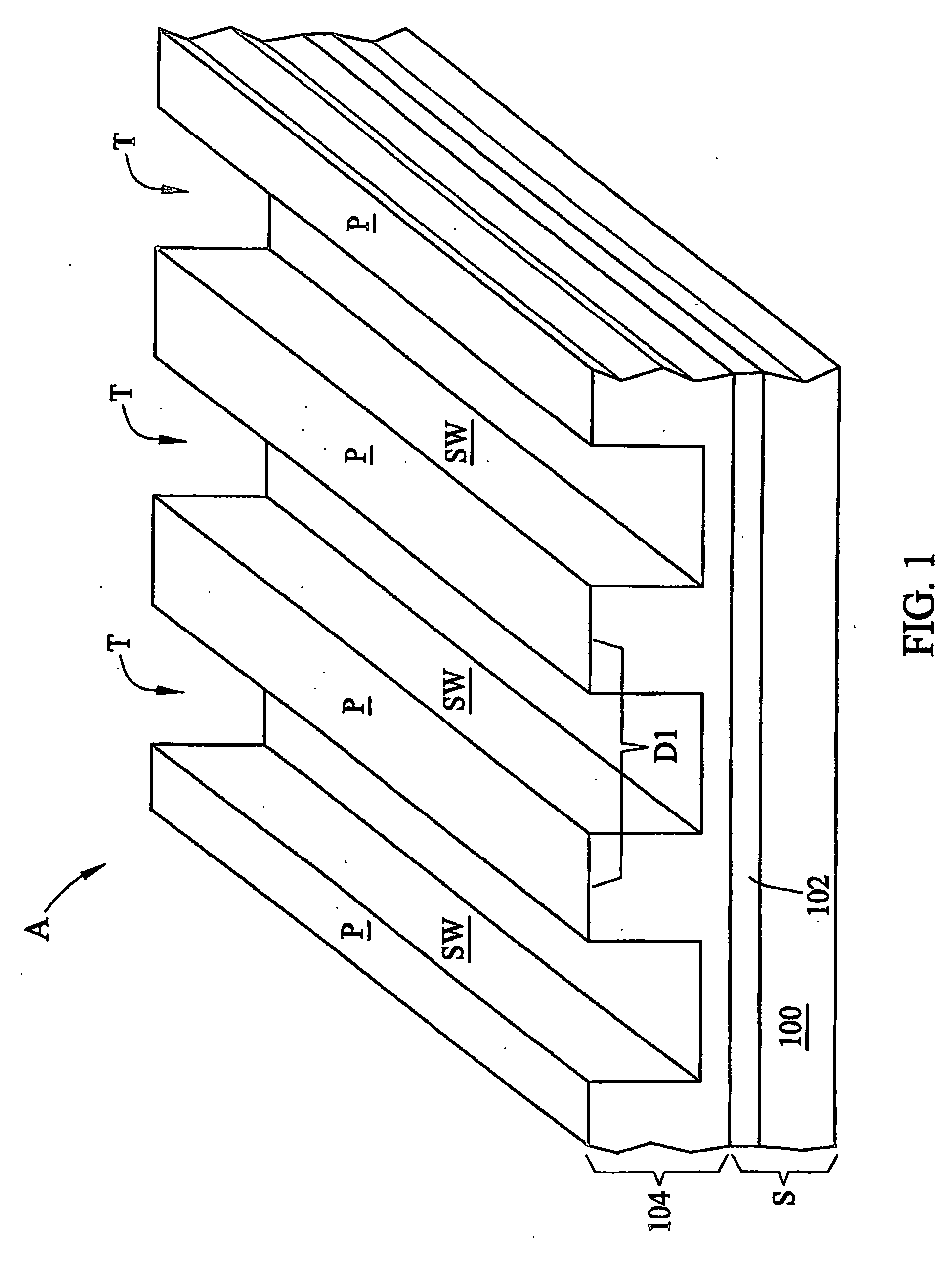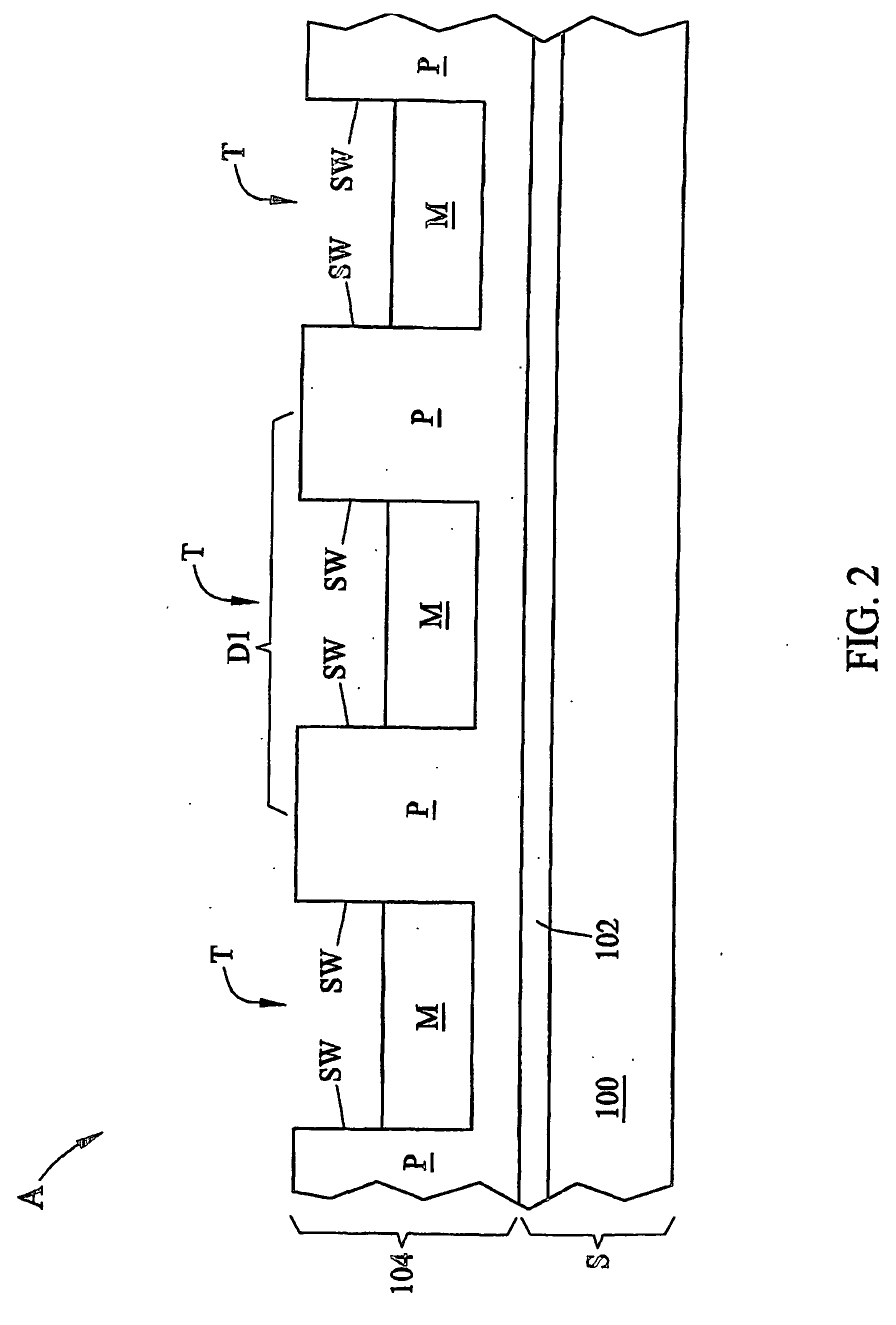Methods for nanoscale structures from optical lithography and subsequent lateral growth
a nanoscale structure and optical lithography technology, applied in the field of nanoscale lateral epitaxial growth methods and structures, can solve the problems of adverse effects on the electronic or optical properties of devices manufactured, gan dislocation or dislocation defects, and nitride semiconductor materials, etc., to reduce the effect of reducing the density of dislocation or d
- Summary
- Abstract
- Description
- Claims
- Application Information
AI Technical Summary
Benefits of technology
Problems solved by technology
Method used
Image
Examples
Embodiment Construction
[0027] The present subject matter discloses methods, and structures formed thereby, for forming laterally grown structures with nanoscale dimensions from nanoscale arrays patterned from nanoscale lithography, such as for example and without limitation, edge defined lithography or another lithography method capable of achieving features of a nanoscale dimensional size. The structures and methods disclosed herein have applications with, for example and without limitation, electronic, photonic, molecular electronic, spintronic, microfluidic or nano-electromechanical (NEMS) technologies.
[0028] A wide bandgap semiconductor can be used such as Group III nitrides, particularly gallium nitride (GaN). As used herein and appreciated by those of skill in the art, GaN includes alloys of GaN such as aluminum nitride, indium nitride, aluminum gallium nitride, indium gallium nitride and aluminum indium gallium nitride. While the description herein often uses GaN as an example of a material suitab...
PUM
| Property | Measurement | Unit |
|---|---|---|
| width | aaaaa | aaaaa |
| width | aaaaa | aaaaa |
| spacing distance | aaaaa | aaaaa |
Abstract
Description
Claims
Application Information
 Login to View More
Login to View More - R&D
- Intellectual Property
- Life Sciences
- Materials
- Tech Scout
- Unparalleled Data Quality
- Higher Quality Content
- 60% Fewer Hallucinations
Browse by: Latest US Patents, China's latest patents, Technical Efficacy Thesaurus, Application Domain, Technology Topic, Popular Technical Reports.
© 2025 PatSnap. All rights reserved.Legal|Privacy policy|Modern Slavery Act Transparency Statement|Sitemap|About US| Contact US: help@patsnap.com



